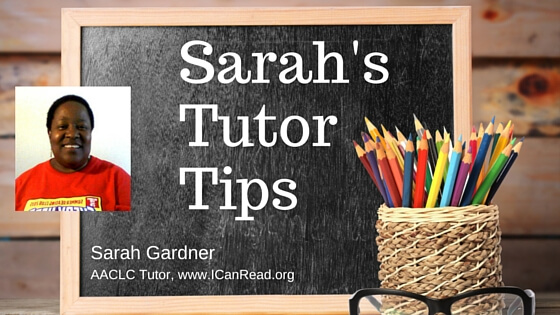
Tutor:
A common issue in the tutor reporting so far this month is short vowel sounds. Does anyone have ideas in teaching short vowel sounds and helping students retain that knowledge???
Sarah:
I always want to know what my student is really thinking about the problem he or she is having when trying to read. There is an AWESOME website, Reading Rockets, which has a tool called “Target the Problem.” Questions and answers are given from a student’s, teacher’s, and parent’s point of view in all the areas of reading: word decoding, fluency, reading comprehension, sound awareness, vocabulary, etc. You can use this tool to understand the reading difficulties of students of any age.
I believe in the whole brain concept of teaching the brain to associate sounds, words, and pictures together. When a student struggles to put sounds together, it takes all of the energy out of trying to read (and some students forget what they are trying to do!). I like using pictures to convey meaning, and while some students like the movement of tapping out /sounding out words… others don’t understand that concept. (If it’s a pig, show the picture of a “pig” and say PIG!)
Has your student’s hearing and vision been checked, lately? Some students with learning disabilities may need glasses or hearing aids or other directions toward understanding the printed word.
I just learned the differences in short and long vowel sounds about two years, ago. Long sounds are heard when the names of letters of the alphabet are spoken aloud. Direct the student’s focus to the short sounds of the vowels: a, e, i, o, u, and sometimes y by using one syllable words, such as: at, egg, big, dog, fuss, and myth. To avoid confusion, do not mix short vowel sounding words and long vowel sounding words together in the same lesson, if possible. (Don’t teach bit with bite; con with cone; can with cane, unless you are sure your student has mastered the difference between short and long vowel sounds!)
I would practice this with two or three words that use one ‘short’ sound, like bat, fat, sat… or bed, fed, red. Let your student gain the confidence of learning and hopefully remembering a few new words to understand the pattern of the concept.
You can also use pictures to teach abstract words, like: to, of, a, the …. a piece of cake; to the school…. Dr. Seuss is great for rhyming, blending, and discussing the pictures one sees in the mind. You want to teach the student to see the picture associated with the sound in her mind. And teach Word Families… if you teach pig, also, teach: big, dig, fig, rig, twig, and wig…
Create a Word Wall to list words with short vowel sounds in columns: a – apple, at, bat, Al; e– egg, beg, Peg; i– igloo, itchy, big, Bill; o– ox, owl, Bob; u– umbrella, nut, Guss and; y– gym, myth, Yvette. Use Word Families… at, bat, cat, mat, pat, rat…. to repeat the short vowel over and over.
Think of people’s names that use short vowel sounds to help your student associate the short sound to a name that is familiar to him or her. Check for student understanding… ask them “What is meant when a word has a short vowel sound? What is meant when a word has a long vowel sound?”
“Can you hear the difference?”
Take the time to ask questions to find out what your student understands. It is important to know what he or she is thinking. We all have different learning styles in the way we process information.
For more tutors’ tools and resources please visit the Anne Arundel County Literacy Council ICANREAD.ORG website.
